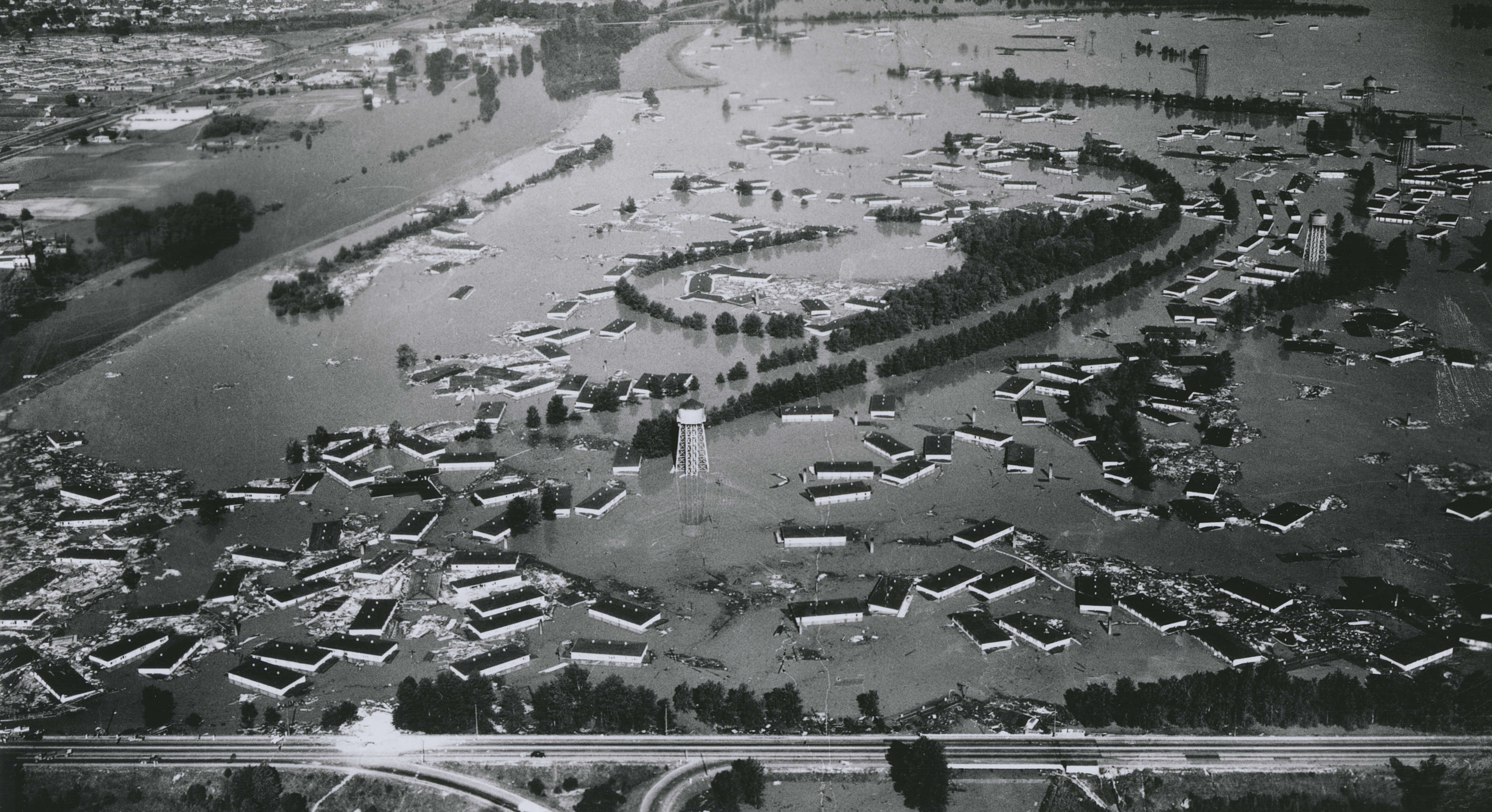
An aerial view of the 1948 Vanport Flood, which breached part of the Columbia River levee system. Voters were asked to decide on a new floodwall for that segment in Multnomah County's May 21 election.
Photo courtesy of the Oregon Historical Society Research Library, OrgLot131_010
Multnomah County voters appear to have approved a bond measure for repairing the Columbia River levee system, according to early primary results Tuesday night.
The $150 million bond, on the ballot as Measure 26-243, will go toward repairing and expanding the river levee system that shields the valley from flooding. The federal government will match those funds with another $100 million.
Related: Oregon May 21 primary election results
Property owners can expect their annual taxes to rise by 11 cents per $1,000 of their property’s assessed value if early returns hold. The average assessed value for a home in Multnomah County is $246,712 (assessed values are not the same as market values, which are often significantly higher). The average homeowner will pay about $2.19 a month in taxes to cover this bond.
Those funds will go toward raising about 9 miles of levees and floodwalls along the Columbia River. The work will also include upgrading seven pump stations, creating power backups for outages, and building a levee and floodwall through a segment that was breached during the 1948 Vanport Flood.
The Columbia River Basin is a Texas-sized drainage system spanning from British Columbia, Canada, through several U.S. states. Multnomah County is near its lowest point — at the bottom of a large geological bowl — so major rain and snow runoff can put significant pressure on its levee system.
That pressure could increase depending on the outcome of flood management negotiations between Canada and the United States.
For six decades, the countries have coordinated flood management within the basin based on the 1964 Columbia River Treaty, which needs to be renewed by September. The two countries have met more than a dozen times since negotiations started in 2018, and they have yet to come to an agreement.
As part of the current treaty, Canada holds back water in exchange for hydropower generated by 14 dams operated by the U.S. Army Corps of Engineers and the Bureau of Reclamation. That’s done in advance of any potential flood risks.
Once the treaty sunsets, the U.S. will need to ask Canada to hold back water when needed, and it would need to compensate Canada for that work.
In 2010, when U.S. federal agencies were preparing for new treaty negotiations, local tribes in the basin issued a statement calling on those agencies to prioritize tribal input. It hadn’t been included in the initial treaty. Tribes criticized the treaty for prioritizing flood control and hydropower over ecological concerns, which they said resulted in a dam system that degraded rivers, first foods, natural resources and tribal culture.

